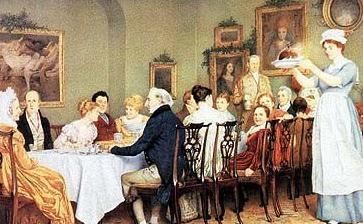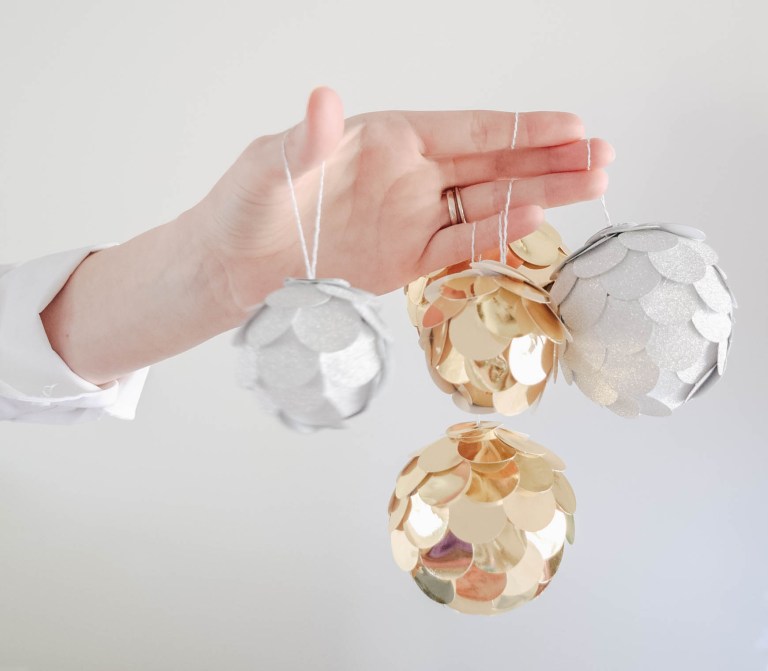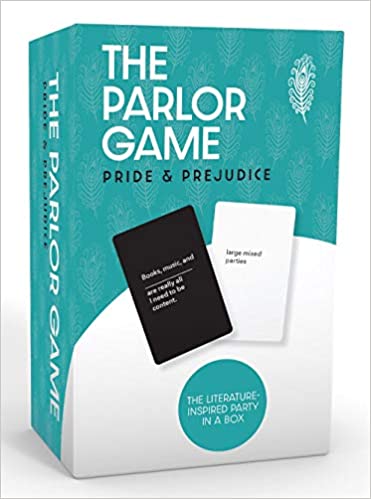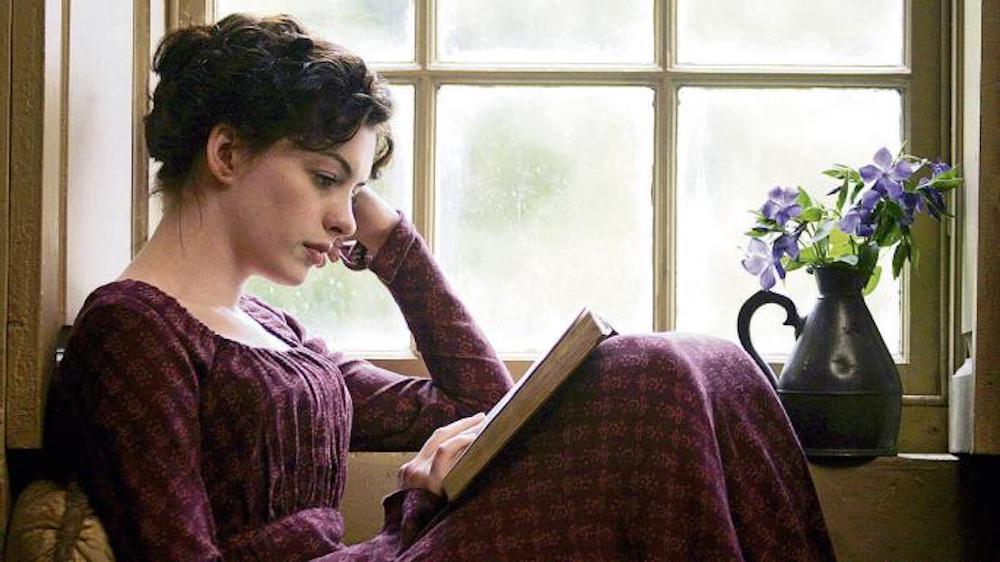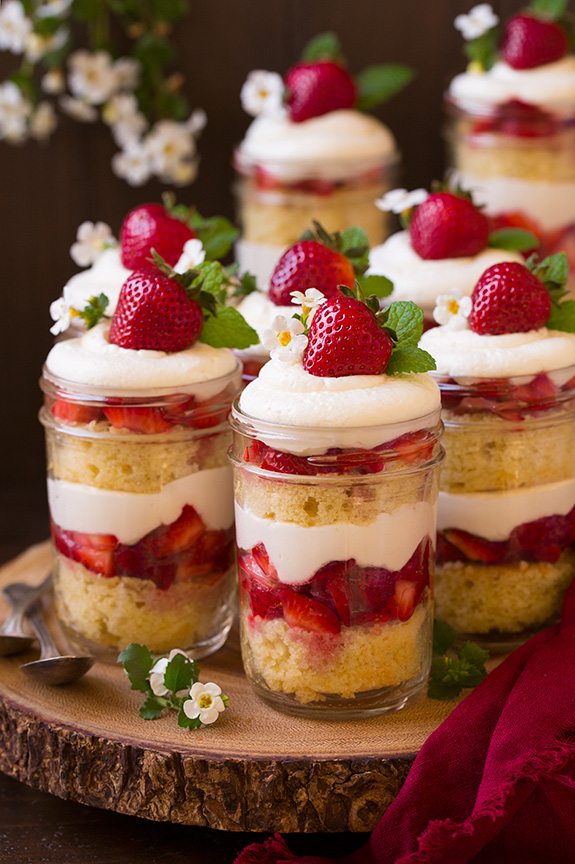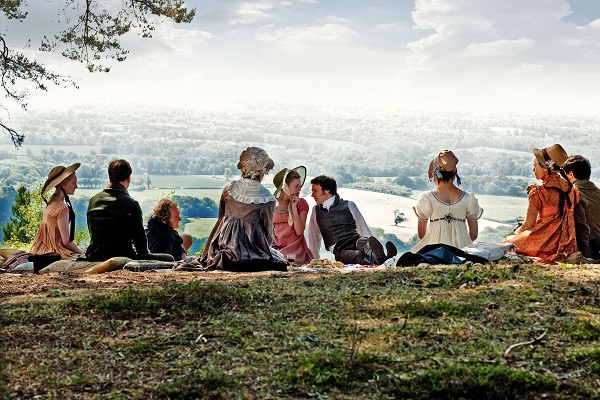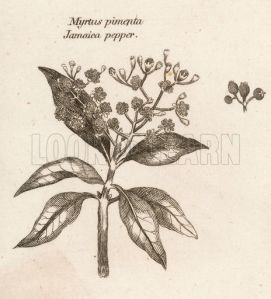I love the idea of a Regency-style Christmas season, complete with gifts, foods, and traditions that Jane Austen and her heroines might have enjoyed. Though Christmas traditions were different during Jane Austen’s time than they are today, as I share in my article about Regency Christmas Traditions, it’s fun to think of creative ideas that can make for a truly Austen-tatious holiday season.
In Persuasion, Austen paints a Christmas scene. It’s one of my favorite festive scenes, and I love to think of ways to recreate it:
On one side was a table occupied by some chattering girls, cutting up silk and gold paper; and on the other were tressels and trays, bending under the weight of brawn and cold pies, where riotous boys were holding high revel; the whole completed by a roaring Christmas fire, which seemed determined to be heard, in spite of all the noise of the others. […] Charles and Mary also came in, of course, during their visit, and Mr Musgrove made a point of paying his respects to Lady Russell, and sat down close to her for ten minutes, talking with a very raised voice, but from the clamour of the children on his knees, generally in vain. It was a fine family-piece.
Persuasion, Jane Austen
Evergreen Decor:
Create your own holiday decorations the way people did during Jane Austen’s time. Trim your windows and home with holly branches and evergreen trimmings.
On Christmas Eve the children laid out the traditional holly branches on the window ledges…
Jane Austen: A Life, Claire Tomalin, p. 4.
For Regency-inspired holiday decorating ideas, check out this Jane Austen’s World article on Regency Era Christmas Evergreen Decorations.
Craft Table with Silver & Gold Paper:
Create a craft station for children and adults to make ornaments or other crafts like these: Christmas Crafts for Kids and Adults from Abbi Kirsten.
On one side was a table occupied by some chattering girls, cutting up silk and gold paper…
Persuasion, Jane Austen
Tressels and Trays:
- Load your table with Christmas Pye and other Regency Foods (Jane Austen’s World)
- Make a Traditional White Soup (InLiterature.com)
- Make a Christmas Pudding (Jane Austen’s World)
- Provide a Wassail Bowl of Mulled Cider (Jane Ausen’s World)
- Go BIG and plan an entire Regency-style Menu: A Regency Christmas Menu (Thither.com)
…on the other were tressels and trays, bending under the weight of brawn and cold pies…
Persuasion, Jane Austen

Riotous Games:
- Play Blind Man’s Bluff or Hunt the Slipper: Two Songs/Dances/Games Played During a Regency Christmas Season (Jane Austen’s World)
- Play this Pride and Prejudice Parlor Game
- Read this fun article by Lucy Worsley on Parlor Games of the Past
…riotous boys were holding high revel…
Persuasion, Jane Austen
A Roaring Fire:
- Build a cozy fire or even Light the Yule Log (Jane Austen’s World)
- Bake and decorate a Yule Log Dessert (Tyra Rachele – All Recipes)
…the whole completed by a roaring Christmas fire, which seemed determined to be heard, in spite of all the noise of the others.
Persuasion, Jane Austen
Jane-Inspired Gifts to Buy
This holiday season, add a little “Jane” to your gift giving! Here are a few shops and lists to peruse:
- Alwayz A Treasure Homemade Jane Austen Jewelry
- Literary Gift Company Jane Austen Collection
- Gifts from the Jane Austen Centre
- The Complete Austen Gift-Buying Guide from Dear English Major
Austenesque Homemade Gifts
Want to make your own gifts? Check out these creative ideas!
- Make Regency-style Scented Sachets (or “sweet bags”) (Jane Austen Centre)
- Bake and decorate Jane Austen Silhouette Cookies (Regency Austentation)
Charitable Giving
Finally, charitable gift giving was a large part of the Regency Christmas season. On the day after Christmas, on St. Stephen’s Day (now called Boxing Day), people gave gifts to charities and to those in need.
The gentry gave gifts to the servants who worked in their homes and those hired to help on their land. Read The History of Boxing Day And How To Celebrate It (Lindsay Schlegel – Verity.com) for some modern-day ideas for ways to celebrate Boxing Day.
Now it’s your turn! What do you like to do around the holidays to make your gifts and get-togethers special? Do you have any Jane Austen traditions this time of year? I enjoy attending one of the local Jane Austen Birthday Teas in my area at this time of year. At home, I love to decorate the house with greenery and bake family recipes! -Rachel
RACHEL DODGE teaches college English classes, gives talks at libraries, teas, and book clubs, and writes for Jane Austen’s World blog and Jane Austen’s Regency World magazine. She is the bestselling author of The Anne of Green Gables Devotional: A Chapter-By-Chapter Companion for Kindred Spirits and Praying with Jane: 31 Days Through the Prayers of Jane Austen. Her newest book The Little Women Devotional is coming this January! You can visit Rachel online at www.RachelDodge.com.
